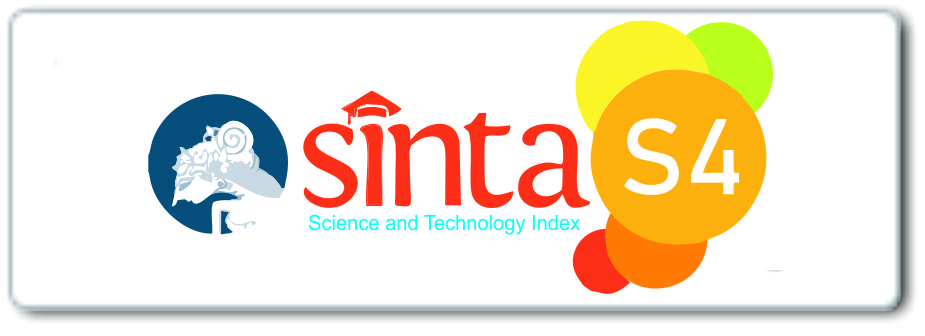Papaya Jelly Candy Transforming Cancer Patients' Lives with Delicious Flavor and Extraordinary Benefits
DOI:
https://doi.org/10.56988/chiprof.v4i1.74Keywords:
Food innovation, Papaya jelly candy, Cancer, Nutrients, Patient healthAbstract
Cancer is a disease with profound physical, emotional, and economic impacts. One of the common challenges faced by cancer patients is malnutrition due to the side effects of treatments like chemotherapy and radiotherapy. Reduced appetite, nausea, and digestive issues often impede the recovery process. To address this, this study aims to develop papaya-based jelly candies that not only offer a delightful taste but also provide essential nutritional benefits for cancer patients. Papaya, rich in vitamin C, antioxidants, and the enzyme papain, plays a vital role in boosting the immune system and improving digestion. In this study, laboratory experiments were conducted to create a jelly candy formula using natural ingredients that are both easy to consume and beneficial for cancer patients. A sensory test with 50 participants revealed that papaya jelly candy was well-received in terms of taste, texture, aroma, and packaging. 80% of respondents reported an increase in appetite after consuming the candy, and 45% experienced a boost in energy and stamina. Furthermore, the papaya gummies demonstrated positive effects on digestion and immune function, which are critical benefits for cancer patients. This study highlights the potential of papaya jelly candy as a healthy, practical, and enjoyable nutritional supplement for cancer patients. Moving forward, the development of this product is expected to support nutritional therapy for cancer patients and open new avenues for innovation in functional food products made from natural ingredients
Downloads
References
M. DEWI, “Sebaran Kanker di Indonesia, Riset Kesehatan Dasar 2007,” Indones. J. Cancer, vol. 11, no. 1, p. 1, 2017, doi: 10.33371/ijoc.v11i1.494.
S. Susetyowati, R. Pangastuti, S. R. Dwidanarti, and H. Wulandari, “Asupan makan, status gizi, dan kualitas hidup pasien kanker payudara di RSUP DR Sardjito Yogyakarta,” J. Gizi Klin. Indones., vol. 14, no. 4, p. 146, 2018, doi: 10.22146/ijcn.18392.
J. M. Dotto and S. A. Abihudi, “Nutraceutical value of Carica papaya: A review,” Sci. African, vol. 13, p. e00933, 2021, doi: https://doi.org/10.1016/j.sciaf.2021.e00933.
S. Patel, K. Rana, P. Arya, J. Nelson, V. Hernandez, and V. Minakova, “Anticancer Activity of Phytochemicals of the Papaya Plant Assessed: A Narrative Review.,” J. cancer Prev., vol. 29, no. 3, pp. 58–68, 2024, doi: 10.15430/JCP.24.020.
B. Andinata, A. Bachtiar, P. Oktamianti, J. R. Partahi, and M. S. A. Dini, “A Comparison of Cancer Incidences Between Dharmais Cancer Hospital and GLOBOCAN 2020: A Descriptive Study of Top 10 Cancer Incidences,” Indones. J. Cancer, vol. 17, no. 2, p. 119, 2023, doi: 10.33371/ijoc.v17i2.982.
J. Arends, “Malnutrition in cancer patients: Causes, consequences and treatment options,” Eur. J. Surg. Oncol., vol. 50, no. 5, p. 107074, 2024, doi: 10.1016/j.ejso.2023.107074.
R. Srivastava, N. Jaiswal, H. Kharkwal, N. K. Dubey, and R. Srivastava, “Phytomedical Properties of Carica papaya for Boosting Human Immunity Against Viral Infections,” Viruses, vol. 17, no. 2, 2025, doi: 10.3390/v17020271.
V. Vallejo-Castillo, J. Muñoz-Mera, M. F. Pérez-Bustos, and A. Rodriguez-Stouvenel, “Recovery of antioxidants from papaya (Carica papaya L.) peel and pulp by microwave–assisted extraction,” Rev. Mex. Ing. Quim., vol. 19, no. 1, pp. 85–98, 2020, doi: 10.24275/rmiq/Alim593.
M. Fitriana, “UJI TERATOGENIK JAMU BROTOWALI ( Tinospora Crispa ) DAN DAUN PEPAYA ( Carica Papaya ) TERHADAP FETUS MENCIT PUTIH ( Mus Musculus ),” vol. 4, no. 1, pp. 198–208, 2024.
A. N. E. Hamed, M. E. Abouelela, A. E. El Zowalaty, M. M. Badr, and M. S. A. Abdelkader, “Chemical
constituents from Carica papaya Linn. leaves as potential cytotoxic, EGFRwt and aromatase (CYP19A) inhibitors; a study supported by molecular docking,” RSC Adv., vol. 12, no. 15, pp. 9154–9162, Mar. 2022, doi: 10.1039/D1RA07000B.
I. J. Biosci, P. M. G. Jr, and I. J. Biosci, “Anti-cancer activity of Carica papaya leaf ethanolic extract and fractions against selected human cancer cell lines,” Int. J. Biosci., vol. 6655, pp. 1–8, 2023, doi: 10.12692/ijb/23.1.1-8.
P. D. Raj, P. R. K. Reddy, P. Thiruvanavukkarasu, S. Rajesh, and R. Hari, “Anticancer Activity of Phyto Ligands from Carica papaya Leaves by Suppression of PI3CKA and BCL2 Proteins - An insilico Approach,” Biomed. Pharmacol. J., vol. 15, no. 3, pp. 1289–1298, 2022, doi: 10.13005/bpj/2466.
M. Chávez-Pesqueira and J. Núñez-Farfán, “Domestication and genetics of papaya: A review,” Front. Ecol. Evol., vol. 5, no. DEC, Dec. 2017, doi: 10.3389/FEVO.2017.00155.
“The PENGARUH KONSENTRASI KARAGENAN DAN SUHU PEMANASAN TERHADAP KARAKTERISTIK DAN ANTIOKSIDAN JELLY DRINK DAUN PEPAYA | Media Ilmiah Teknologi Pangan (Scientific Journal of Food Technology).”
H. T. Lawless and H. Heymann, “Sensory Evaluation of Food,” 2010, doi: 10.1007/978-1-4419-6488-5.
S. Hurtado-Barroso, M. Trius-Soler, R. M. Lamuela-Raventos, and R. Zamora-Ros, “Vegetable and Fruit Consumption and Prognosis Among Cancer Survivors: A Systematic Review and Meta-Analysis of Cohort Studies,” Adv. Nutr., vol. 11, no. 6, p. 1569, Nov. 2020, doi: 10.1093/ADVANCES/NMAA082.
M. S. Ummah, “Discovering Statistics Using IBM SPSS Statistics,” Sustain., vol. 11, no. 1, pp. 1–14, 2013.
A. Fauzi, H. Suyana, and D. Oktavia, “The Influence of Service Quality, Product Quality, Price Perception and Location on Visitor Satisfaction,” Mark. Bus. Strateg., vol. 1, no. 1, pp. 13–22, 2023, doi: 10.58777/mbs.v1i1.156.
M. S. Charli, S. K. Eshete, and K. L. Debela, “Learning How Research Design Methods Work: A Review of Creswell’s Research Design: Qualitative, Quantitative and Mixed Methods Approaches,” Qual. Rep., vol. 27, no. 12, pp. 2956–2960, 2022, doi: 10.46743/2160-3715/2022.5901.
F. Z. Nisa, M. Astuti, S. M. Haryana, and A. Murdiati, “Effect of papaya leaves (Carica papaya L.) extract on immune response (TLR-7, TLR-9) and inflammation (COX-2) in rats induces DMBA (7, 12-Dimethylbenz[a]antrasen),” Pakistan J. Biol. Sci., vol. 23, no. 11, pp. 1450–1455, 2020, doi: 10.3923/PJBS.2020.1450.1455.
C. S. Kılıç et al., “Rhoifolin: a Promising Flavonoid With Cytotoxic and Anticancer Properties – Molecular Mechanisms and Therapeutic Potential,” EXCLI J., vol. 24, pp. 289–320, 2025, doi: 10.17179/excli2024-7836.
O. R. Alara, N. H. Abdurahman, and J. A. Alara, “Carica papaya: comprehensive overview of the nutritional values, phytochemicals and pharmacological activities,” Adv. Tradit. Med., vol. 22, no. 1, pp. 17–47, Mar. 2022, doi: 10.1007/S13596-020-00481-3.
Downloads
Published
How to Cite
Issue
Section
License
Copyright (c) 2025 Marlinda, Demandia Yona, Naila Zahirah, Najwa Risha Larasati

This work is licensed under a Creative Commons Attribution-NonCommercial 4.0 International License.




















